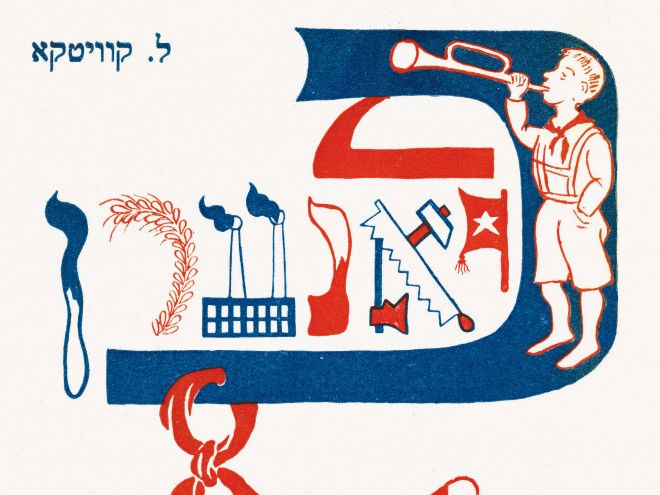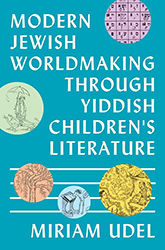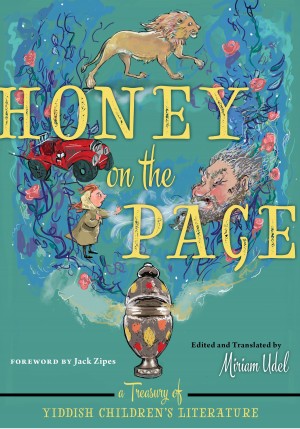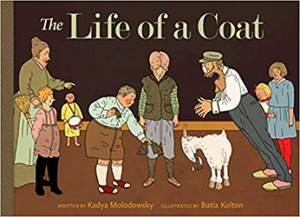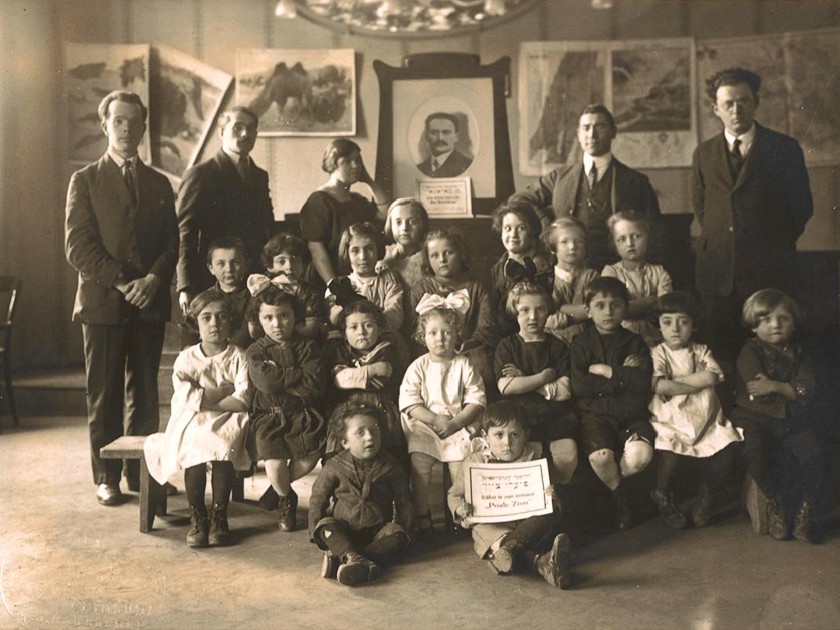
Students and teachers in a classroom of the first Jewish kindergarten, Czernowitz, Romania, 1920s; via WikiMedia Commons
When we think of the forces that shaped modern Jewry, we tend to talk about the Jewish Enlightenment and secularization, migration patterns, economic arrangements, shifting borders, and the perpetual threat of violence. But too seldom have scholars thought about how all these experiences and more were shared with those whose futures hung in the balance, Jewish children.
How was Jewish culture transmitted, and how were young Jews’ political opinions formed? Some of the answers lie within the increasingly brittle pages of the large, variegated corpus of Yiddish children’s literature — comprising nearly 1,000 standalone books and several periodicals produced over almost a century. I have spent over a decade translating and analyzing these works, and thinking about the new window they open onto Ashkenazi modernity.
Yiddish stories, poems, and plays for children originally grew out of politically aligned fraternal organizations and the schooling networks they spawned in Europe and North and South America. Between roughly the ends of the two World Wars, this literature came to be published on four continents, encoding an intimate record of the aspirations and frustrations of Yiddish-speaking communities almost everywhere. While the interwar period marked the peak of Yiddish publishing activity for children, the production of secular children’s literature had begun in 1889 (with a Purim tale by Mordkhe Spektor, “Kids!”) and wound down only in the 1970’s. And if we look beyond the self-defined secular left, Yiddish children’s literature and culture continues to be produced and consumed today — with skyrocketing production values — in the Hasidic world.
The linguist Max Weinreich, one of the founders of the YIVO Institute for Jewish Research, famously recorded the bon mot shared with him by a high school teacher at an evening class for adults, “A language is a dialect with an army and a navy.” The cultural leaders, many of them full-time educators, who wrote for the Yiddish-reading young, recognized that theirs wasn’t to be a conventional nation building project. There would be no Yiddish-speaking military to defend borders and deter incursions. Instead, they sought to create a multifarious nation of the spirit, a symbolic world, for their young readers to inhabit with a sense of joy, dignity, and safety. Importing a term used variously in the realms of political philosophy and fiction writing, I call their mission worldmaking.
My new book, Modern Jewish Worldmaking Through Yiddish Children’s Literature, moves through space as it moves through time: from the early days of this literature in the great Yiddish cultural capitals of Europe, Warsaw, and Vilna, to the Americas and what Yiddish speakers had long called Eretz Yisroel, the Land of Israel. Until the turn of the twentieth century, it wasn’t obvious that Jewish children’s literature should exist — in any language. Ashkenazi children were read to, and then learned to read independently, as proto-men and proto-women, in a gender-stratified cultural-linguistic system. Boys (at least in the ideal) were inducted into knowledge of Hebrew and Aramaic for fullest access to Jewish holy texts, while girls remained with their mothers and aunts in the mother tongue, or mame loshn, as Yiddish was known. A dedicated children’s literature grew up together with modern schools systems and other institutions for the care of young, including the children’s homes founded to relieve the orphanhood crisis brought on by the Great War. The birth of this literature was inextricable from rapidly shifting ideas about childhood and family life, alongside greater opportunities for leisure — and leisure reading.
Some children’s texts oriented themselves toward the Jewish past, illustrating how Sabbaths and holidays could still offer something of value to modern Jews, including those who defined themselves as “secular.” Some dove deep into history, mythologizing it as needed, to create moral heroes for modern children. Others tilted toward, and tried to shape, the future: articulating new visions of venturesome girls, democracy education, wealth redistribution, and perpetual revolution on the Soviet model. Ultimately, the Holocaust spelled an end to the European chapter of Yiddish children’s literature, and the decimation of Eastern European Jewish youth spurred American Yiddish educators to craft stories for new purposes, including healing their readers from the moral injury visited by witnessing genocide at a distance, and articulating a rationale for joyfully and affirmatively choosing to live lives of Jewish meaning.
I hope that Modern Jewish Worldmaking Through Yiddish Children’s Literature invite readers to explore the Yiddish originals, and my 2020 anthology, Honey on the Page: A Treasury of Yiddish Children’s Literature. That collection of nearly fifty lively primary texts showcased the diversity of Yiddish children’s literature along geographic, ideological, and aesthetic lines. Readers encounter the South Jersey “Chickens Who Wanted to Learn Yiddish,” the “leftist Lassie” proletpup Labzik, the magic lion who spent a companionable Shabbos with a rabbi deserted by his companions, along with the innumerable human characters who peopled folk tales, fairy tales, school stories, bouncing narrative poems, insistently realist slices of life, and much more.
These deceptively simple texts reward our close attention, aesthetically and historically. Nor are they just artifacts of the recent past. To a greater extent than I might like, these materials feel urgent for a Jewish community that perceives itself, once again, to be living through a tumultuous and exigent historical moment. “What shall we tell the children?” rings as an eternal question. Modern Jewish Worldmaking delves into some of the answers Ashkenazi Jewry has proffered before and is overdue to revisit.
Miriam Udel is associate professor of Yiddish language, literature, and culture and the Judith London Evans Director of the Tam Institute for Jewish Studies at Emory University. She is the author of Never Better! The Modern Jewish Picaresque and the editor and translator of Honey on the Page: A Treasury of Yiddish Children’s Literature.
